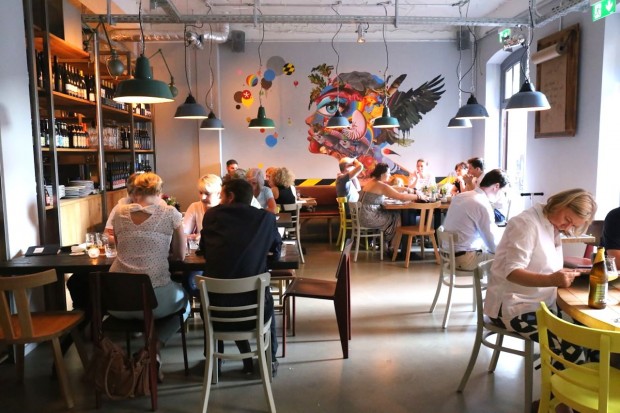

It was also some time around this point that it was realized that the tower could become the world's tallest structure to improve signal quality and attract tourists, and plans were changed to incorporate subtle modifications throughout the structure to this end.


One engineer, in particular, felt that visitors would feel the higher observation deck would be worth paying extra for, and the costs in terms of construction were not prohibitive. The idea for the main level in its current form evolved around this time, but the Space Deck (later renamed SkyPod) was not part of the plans until some time later. As the design effort continued, it evolved into the current design with a single continuous hexagonal core to the SkyPod, with three support legs blended into the hexagon below the main level, forming a large Y-shape structure at the ground level. Had it been built, this design would have been considerably shorter, with the metal antenna located roughly where the concrete section between the main level and the SkyPod lies today. The original plan for the tower envisioned a tripod consisting of three independent cylindrical "pillars" linked at various heights by structural bridges. CN intended to rent "hub" space for microwave links, visible from almost any building in the Toronto area. As each new skyscraper was added to the downtown, former line-of-sight links were no longer possible. The reflective nature of the new buildings reduced the quality of broadcast signals requiring new, higher antennas that were at least 300 m (980 ft) tall.Īt the time, most data communications took place over point-to-point microwave links, whose dish antennae covered the roofs of large buildings.

Īs Toronto grew rapidly during the late 1960s and early 1970s, multiple skyscrapers were constructed in the downtown core, most notably First Canadian Place. Key project team members were NCK Engineering as structural engineer John Andrews Architects Webb, Zerafa, Menkes, Housden Architects Foundation Building Construction and Canron (Eastern Structural Division). The tower would have been part of Metro Centre (see CityPlace), a large development south of Front Street on the Railway Lands, a large railway switching yard that was being made redundant after the opening of the MacMillan Yard north of the city in 1965 (then known as Toronto Yard). These plans evolved over the next few years, and the project became official in 1972. The original concept of the CN Tower was first conceived in 1968 when the Canadian National Railway wanted to build a large television and radio communication platform to serve the Toronto area, and to demonstrate the strength of Canadian industry and CN in particular. It is a signature icon of Toronto's skyline and attracts more than two million international visitors annually. It also belongs to the World Federation of Great Towers. In 1995, the CN Tower was declared one of the modern Seven Wonders of the World by the American Society of Civil Engineers. It is now the ninth tallest free-standing structure in the world and remains the tallest free-standing structure on land in the Western Hemisphere. The CN Tower held the record for the world's tallest free-standing structure for 32 years until 2007 when it was surpassed by the Burj Khalifa, and was the world's tallest tower until 2009 when it was surpassed by the Canton Tower. Following the railway's decision to divest non-core freight railway assets prior to the company's privatization in 1995, it transferred the tower to the Canada Lands Company, a federal Crown corporation responsible for real estate development. Its name "CN" originally referred to Canadian National, the railway company that built the tower. Built on the former Railway Lands, it was completed in 1976. The CN Tower ( French: Tour CN) is a 553.3 m-high (1,815.3 ft) concrete communications and observation tower located in the downtown core of Toronto, Ontario, Canada. John Andrews, Webb Zerafa, Menkes Housden The CN Tower is the world's 9th tallest free-standing structure Ĭanadian National Tower, Canada's National Tower


 0 kommentar(er)
0 kommentar(er)
